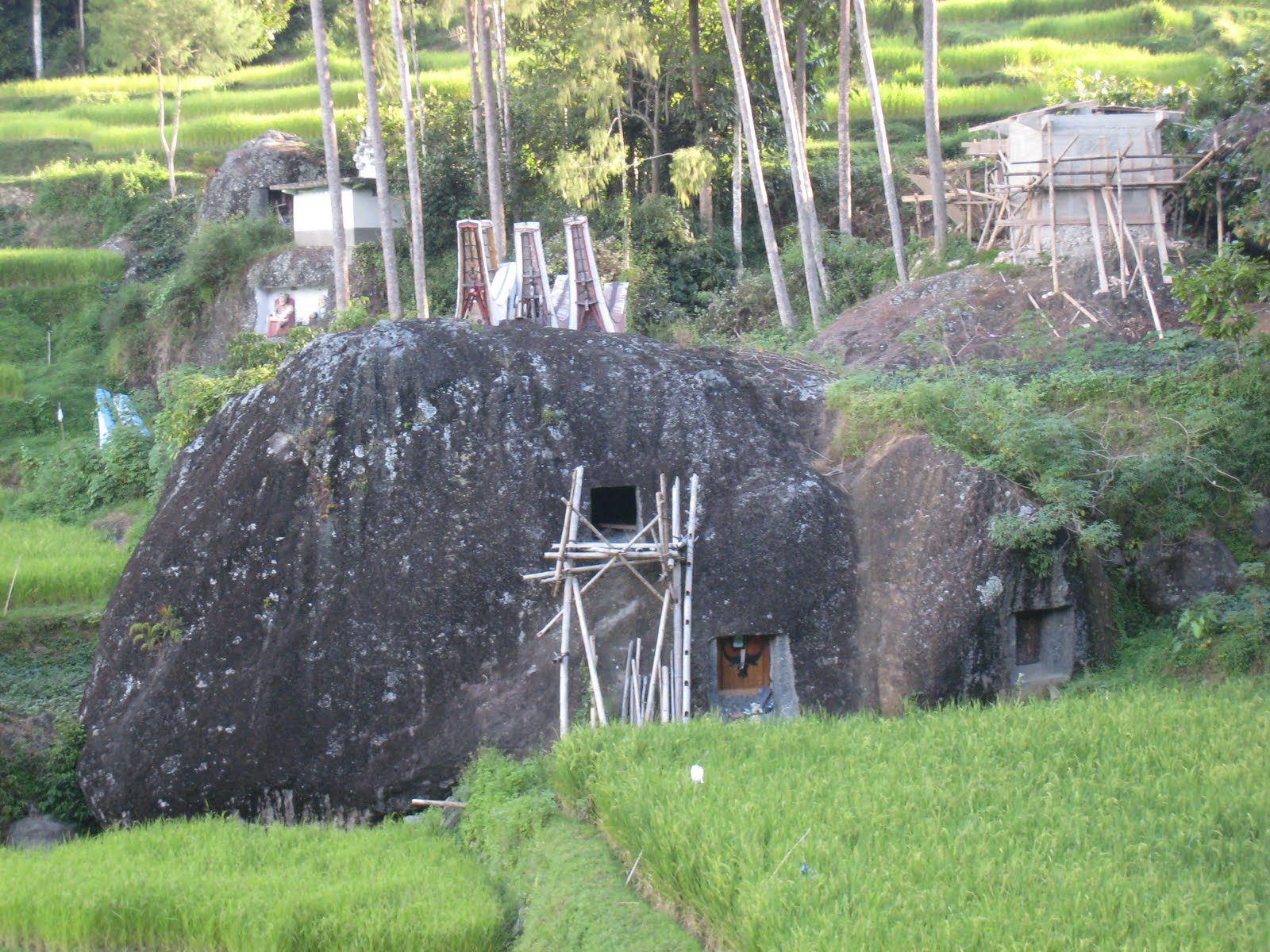Tana Toraja in South Sulawesi has a unique funeral tradition,
with ceremonies reflecting a blend of grief and wealth.
When a Torajan dies in Toraja land, family members of the
deceased are required to hold a series of funeral ceremonies
that usually last for several days before the deceased is
brought to a funeral site for burial. The family of the
deceased should provide tens of buffaloes and pigs for the
ceremony.
The busy scene begins when funeral visitors come and crowd
the buffalo-slaughtering field. A group of funeral visitors
and family members of the deceased chant a 'mournful tune'
known locally as ma'badong, at packed site of the buffaloes'
nemesis.
The deceased is not buried immediately but stored in a
traditional house - or Tongkonan, as locals call it - under
the same roof with his or her kin. Torajans consider the
person to be merely suffering from an illness and not truly
dead until the moment his funeral when the first buffalo
is sacrificed; then their spirit can begin its journey to
the Land of Souls.
The most exciting part of the ceremony is the buffalo fights
and slaughter. Family members are required to slaughter
buffaloes and pigs as they believe that the spirit of the
deceased will live peacefully thereafter, continuing to
herd the buffaloes that have come to join him or her.
The buffalo fighting draws much attention from the locals
and visitors who crowd to catch a glimpse. Cheering and
applause is heard all around when the buffaloes are fighting.
The fighting buffaloes are then slaughtered, and the meat
distributed to the funeral visitors. Distribution is carried
out in accordance to visitors' positions in the community,
and the spirit of the deceased is also entitled to a portion
of meat, known locally as Aluk Todolo. The heads of the
buffaloes are returned to what is locally known as puya
(a site for the soul or spirit of the dead person) and their
horns placed in front of the house of the kin. The more
horns that decorate the front of the house, the higher the
status of the deceased.
The body is not buried until the eleventh day of the ceremony.
Following a birth ceremony for the dead person, characterized
by the sounds of cries of family members, the deceased is
buried - but not in the ground. The final resting placed
is in a cave up on the cliff.
